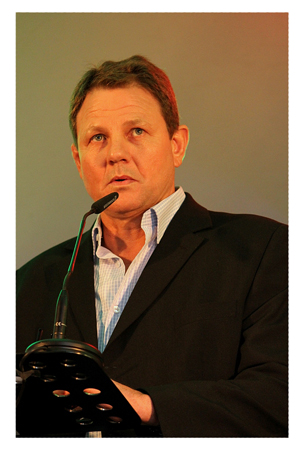
Xaris MD hits back at allegations
Since the announcement that energy company, Xaris won the tender for the construction of a 250mW power plant in the Erongo Region, Nampower and in particular Xaris, have been dominating headlines in recent weeks.
This week however, Xaris Managing Director, Hennie Steyn shot back at allegations that the costs pertaining to the construction of the power station had ballooned and that the specifications set down by Nampower had been altered.
Hitting back at critics, Steyn said, “The plant design is such that it can be converted at any time in the future to a combined cycle plant capable to deliver in excess of 400mW.” The N$7.6 billion project was approved by cabinet in March 2015 according to Nampower Managing Director, Paulinus Shilamba when he addressed members of the media during a stakeholder engagement.
Said Steyn, “the statement that the plant will now deliver 400mW is therefore not true. Nampower specified 250mW and the plant will deliver 250mW. Both Xaris and Nampower were however recently approached by other off-takers with an urgent need for power, requesting that the plant be converted to combined cycle thereby increasing the capacity from 250mW to 400mW.
Steyn explained that once complete, the Xaris power station would be scalable as part of its infrastructure design.
According to Steyn, the envisaged off-take would consume the excess power that Nampower would not utilise. Added Steyn, “this potential additional scope of conversion and generating additional power is however not part of the project and would be negotiated at a later stage and at no cost to Namibia.”
Last week, Consumer 4 Electricity member Peter Nutt suggested that the Electricity Control Board of Namibia’s electricity hike was a move to finance the construction of the Xaris and Kudu power projects. Steyn responded, “the comment that electricity prices will be hiked to pay for the construction of the plant does not make sense. The plant is funded mainly through private and international equity players and as such, the largest portion of the structure was developed with private funds. Also, Nampower through its tender and after evaluating the financial feasibility of the project elected to take up 30% of the equity of the plant.”
“The Xaris cost per kilo watt hour came down by 10.8% through further refinements over the past year. We have learned that our evacuation tariff was almost half of our next competitor,” added Steyn. Arandis Power and Xaris were in the final running for the construction of the 250mW power station.
Emphasised Steyn, “It is important to note that the plant has been designed as an interim solution to cover the shortage of power in Namibia before Kudu comes online and also to act as a standby generator once Kudu is operational. The plant is therefore not a replacement for Kudu.”










































